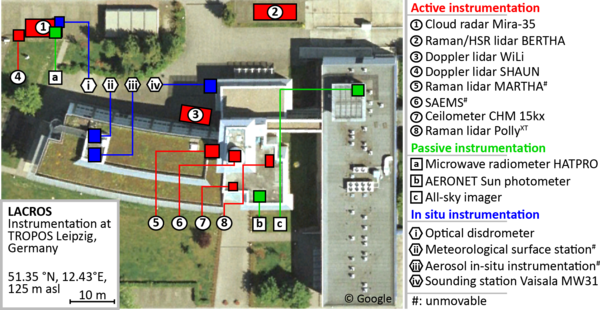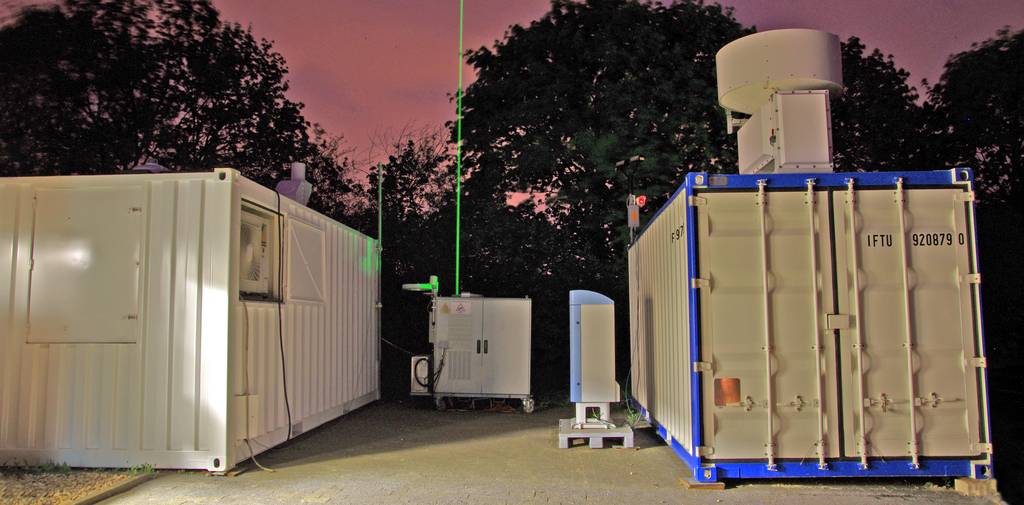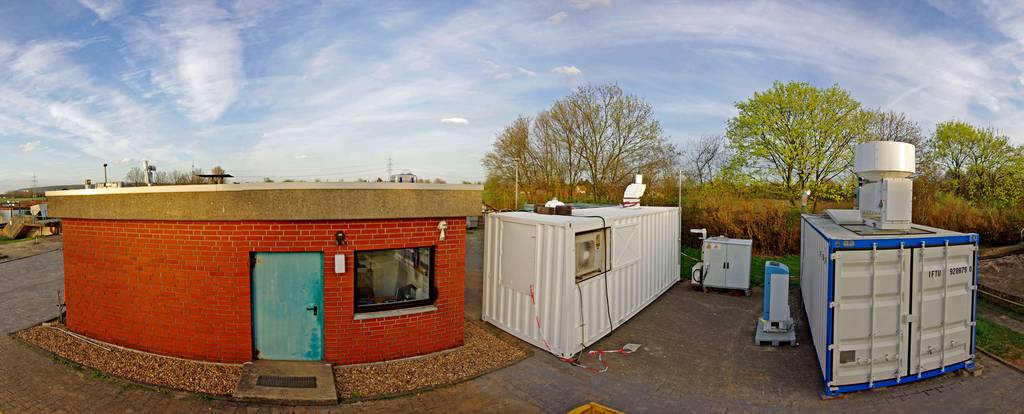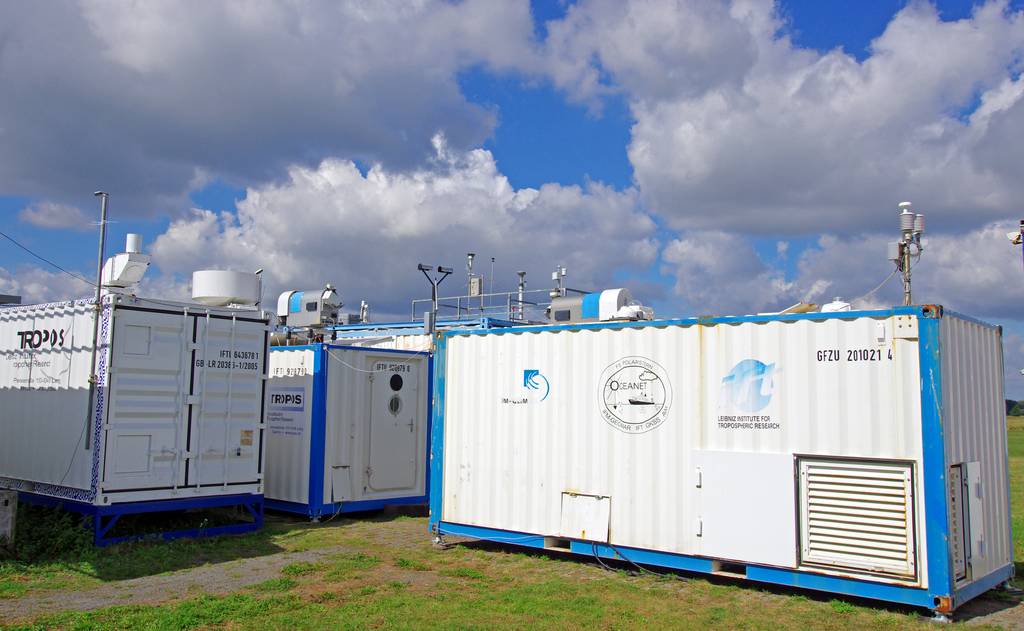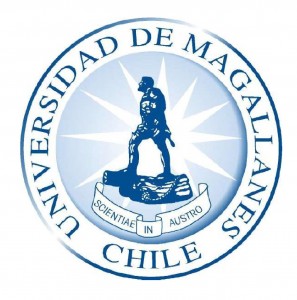Core observational facility of the field campaigns conducted within DACAPO is the Leipzig Aerosol and Cloud Remote Observations System (LACROS).
The large number of unsolved questions concerning the interaction between aerosol particles and clouds and corresponding indirect effects on precipitation and radiative transfer demand new measurement strategies to resolve the atmospheric processes involved. In this regard, obtaining synergistic information about cloud and aerosol properties from multi–instrument and hence multi–sensor observations is a key approach to overcome the current lack of knowledge. Motivated by these needs, the novel mobile multi–instrument platform Leipzig Aerosol and Cloud Remote Observations System — LACROS — has been set up at TROPOS.
LACROS comprises a unique set of active and passive remote-sensing instruments which are to a large extent containerized and available for application in field campaigns. The instruments of LACROS are shown in Fig. 1.
The active-remote-sensing branch now spans the wavelength range from the UV to microwave radiation which is covered with
- multiwavelength-Raman-polarization lidar MARTHA (Multiwavelength Tropospheric Raman lidar for Temperature, Humidity, and Aerosol profiling - only in Leipzig)
- Backscatter Extinction Ratio Temperature, Humidity Lidar — BERTHA (only in Leipzig)
- Portable Lidar System — PollyXT
- a ceilometer CHM 15kx
- the doppler wind lidar systems WiLi and the Streamline - device of Halo Photonics
- the 35-GHz cloud radar MIRA-35
- The Spectral Aerosol Extinction Measurement System (SAEMS) provides spectrally resolved extinction coefficients of aerosols at 15 m above ground
Passive instrumentation which helps to interpret the active remote measurements consists of an Aerosol Robotic Network (AERONET) Sun photometer, the microwave radiometer HATPRO that includes also two infrared radiometers, and an all-sky imager.
Meteorological surface data and radiosondes are available in addition. Measurements of a radiation-balance station that fullfills the criteria of the the Baseline Surface Radiation Network (BSRN) are available. For the determination of precipitation properties an optical disdrometer records the velocity and size distributionof falling hydrometeors in the size range from 0.1 to 10 mm at 4 m above ground.
In addition to the ground-based remote sensing instrumentation, TROPOS is acquiring growing expertise in the managenemt and analysis of spaceborne observationswith passive sensors as the Spinning Enhanced Visible Infrared Imager (SEVIRI) aboard the Meteosat Second Generation (MSG) satellite or the Moderate Resolution Imaging Spectroradiometer MODIS.

